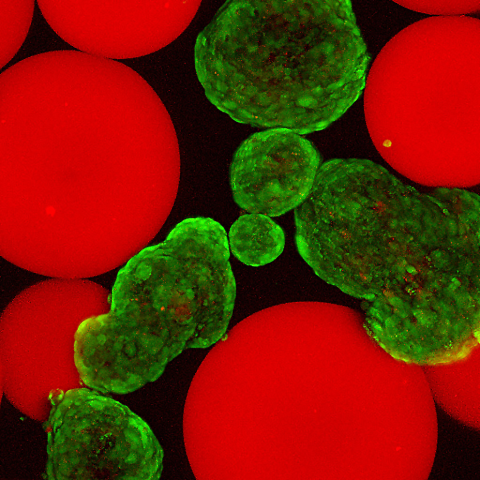Insulin injections to treat Type 1 diabetes could become a thing of the past, but finding the cure faces many challenges. Although transplanting insulin-producing cells represents a promising approach, this cell therapy requires immunosuppression to prevent rejection. Georgia Tech researchers have developed a new biomaterial called iTOL-100 that could cure Type 1 diabetes by inducing immune acceptance of curative transplanted cells without immunosuppression.
This groundbreaking platform therapy is the basis for the new startup, iTolerance. The company is working to enable implantable tissue, organoid, or cell therapy without the requirement for lifelong immunosuppression. The therapies have the potential to not only cure Type 1 diabetes but also regenerate failing livers.
“Our major goal for two decades has been to come up with approaches to eliminate immunosuppression,” said Andrés García, executive director of the Parker H. Petit Institute for Bioengineering and Bioscience and member of iTolerance’s scientific advisory board. “Our combined biomaterial is decorated with a potent immunomodulatory protein, so when we transplant it with cells, it trains the immune system to accept the graft as self and not to reject.”
The Insulin Issue
Type 1 diabetes is an autoimmune condition where a person becomes immune to the pancreas’s insulin-producing cells called islets. Without islets, a person cannot regulate blood glucose levels. Although this form of diabetes can be treated with insulin injections, it is far from a cure and can still lead to long-term complications such as heart disease, vision problems, or even premature death.
The best way to manage Type 1 diabetes currently is either insulin injections or, for patients with more severe conditions, isolating islets from cadavers and reinfusing them into the patient. However, this procedure requires immunosuppression to ensure the body doesn’t reject the cells. This is not only toxic but can make a person more susceptible to other diseases.
“We’re going to be able to treat a lot more patients if we use insulin-producing cells derived from stem cells because that would allow us to eliminate the cadaveric donors,” García said. “Eventually this could benefit all Type 1 diabetes patients.”
How iTOL-100 Works
The biomaterial is made of a synthetic hydrogel, a soft material that is 95% water and 5% synthetic polymer, that acts as a fishnet. On the surface is a potent immune system protein, Fas ligand (FasL), that induces immune acceptance and tolerance.
“People in the field thought that you would have to encapsulate the cells in the biomaterial, but when we realized we could simply mix the cells with the biomaterials, it makes it very easy because we can do it at the time of cell transplantation,” García said.
Introducing iTolerance
García started working on this research after receiving a three-year grant from the Juvenile Diabetes Research Foundation to engineer injectable biomaterials. The biomaterial was first researched in a mouse model, but because they have very different immune systems from humans, they also validated in a non-human primate model. The research proved so promising that it was licensed into iTolerance to eventually push the technology to market.
“The data that the scientific founders of iTolerance generated with the iTOL-100 technology were incredibly compelling,” said Anthony Japour, M.D., CEO of iTolerance. “The opportunity to translate that promising research into the clinic was something we couldn’t pass up. Leveraging the iTOL-100 platform technology not only has the potential to generate a cure for Type 1 diabetes, but also has significant potential to address a number of additional indications using both allogenic pancreatic islets and stem cells that have the potential to cure diseases.”
Currently, iTOL-100 only works with individual cells, making it ideal for diabetes research and even liver failure because they can be treated on a cell-by-cell basis. However, García believes it could be applied to solid organs such as kidneys and hearts.
“The material is really agnostic to what the cell source is,” García said. “It's just a matter of combining the cells with the body materials and transplanting.”
For now, though, iTolerance’s breakthrough could revolutionize the treatment and health of Type 1 diabetes patients.
“Insulin is a way to manage diabetes, but it's not a cure,” García said. “Cell therapy is the cure.”
García has co-founded a company called iTolerance that is developing immunomodulatory biomaterial technology, bringing it further into clinical trials, commercializing it, and ultimately making it available to patients.
García and several other Georgia Tech researchers are inventors of the immunomodulatory biomaterial used in this study and have ownership interest in iTolerance. They are entitled to royalties derived from iTolerance’s future sales of products related to the research. These potential conflicts of interest have been disclosed and are overseen by Georgia Institute of Technology.


